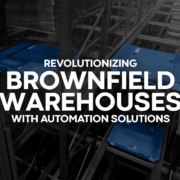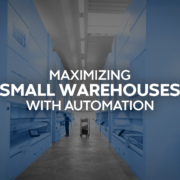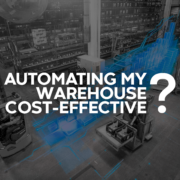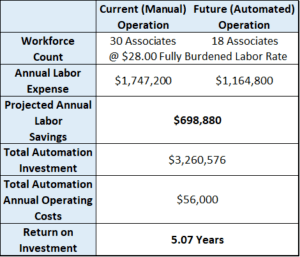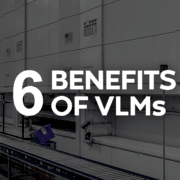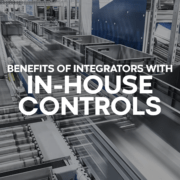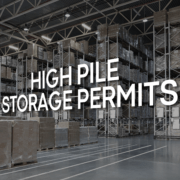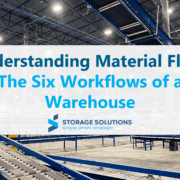Brownfield warehouses play a pivotal role as established facilities that have stood the test of time in the logistics and supply chain world. These warehouses, often with decades of operational history, are now faced with the pressing need to adapt to the demands of the modern era. There are automation solutions crafted to transform brownfield warehouses by optimizing productivity and efficiency while minimizing costs and errors.
Whether you aim to optimize order fulfillment, enhance inventory management, or boost overall warehouse efficiency, our automation solutions are customized to fit your specific requirements.
Advantages of Automating Brownfield Warehouses
Boost in Productivity and Efficiency
Automation solutions allow warehouses to manage inventory and order volumes with minimal human intervention. Automating repetitive tasks, such as picking, sorting, and packing, helps businesses enhance their productivity and achieve faster turnaround times. This leads to more efficient operations, decreasing labor costs and improving overall efficiency.
Enhanced Accuracy and Order Fulfillment
Automation technologies, such as barcode scanning systems and automated conveyor systems, help eradicate human errors in order fulfillment processes. With automated systems, businesses can ensure accurate picking, packing, and shipping of orders, reducing the chances of errors, returns, and customer dissatisfaction. This results in improved customer satisfaction and loyalty.
Optimal Space Utilization
Brownfield warehouses often face space constraints due to their existing infrastructure. Automation solutions can help optimize space utilization by implementing smart storage systems, such as VLMs (vertical lift module) or Jungheinrich’s automated VNA (very narrow aisle) trucks. These technologies maximize vertical space and enable efficient storage and retrieval of inventory, allowing businesses to store more products in the same footprint.
Challenges of Incorporating Automation in Brownfield Warehouses
Integration with Existing Systems and Infrastructure
One of the main hurdles in implementing automation in brownfield warehouses is integrating new systems with existing ones. Brownfield warehouses often have legacy systems and infrastructure in place, making it challenging to seamlessly integrate new automation solutions. Our team’s real-world experience allows us to effectively integrate automation systems with existing setups, ensuring a smooth transition and minimal disruption to your operations.
Adapting to Unique Layout and Constraints
Brownfield warehouses can have unique layouts and constraints due to their existing structures. Automation solutions need to be tailored to fit these specific requirements. Storage Solutions, driven by our technology-agnostic approach, excels in customizing automation solutions for brownfield warehouses, considering the layout, space limitations, and other factors to maximize efficiency and productivity.
Crucial Aspects to Consider When Selecting Automation Solutions
When selecting automation solutions for your brownfield warehouse, there are several crucial aspects to bear in mind. These considerations will help ensure that the selected system is scalable, cost-effective, and compatible with your existing warehouse processes.
Firstly, scalability and flexibility are essential. As your business grows and evolves, you need an automation solution that can adapt to changing demands. Opt for a system that can easily accommodate increased order volumes, additional storage capacity, and changing product lines. Scalability will ensure that your investment in automation is future-proof, allowing your warehouse to keep up with your business growth.
Secondly, a thorough ROI analysis is crucial. Implementing automation solutions in brownfield warehouses can involve a significant investment, and it is essential to assess the return on investment prior to making the commitment. Consider factors such as labor cost savings, improved order accuracy, reduced operational errors, and increased throughput. A comprehensive ROI analysis will help you make an informed decision and determine the cost-effectiveness of the automation solution. This crucial step in the process is one our team understands and can perform effectively, laying the foundation for a successful project.
Lastly, compatibility with existing warehouse processes is vital for a smooth integration. The automation solution should integrate seamlessly with your current inventory management system, warehouse management software, and other operational processes. This compatibility will minimize disruptions and streamline operations, allowing for an easy transition to automated processes.
By considering these key aspects – scalability and flexibility, ROI analysis, and compatibility with existing processes – you can confidently select the right automation solution for your brownfield warehouse. Click here to learn more about what automation solutions could best solve the unique operational challenges in your current warehouse!

